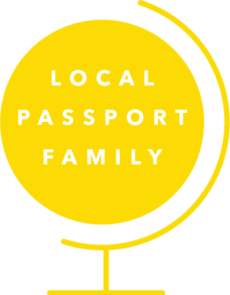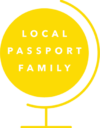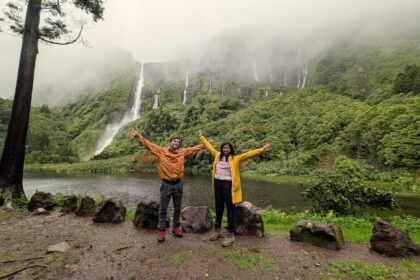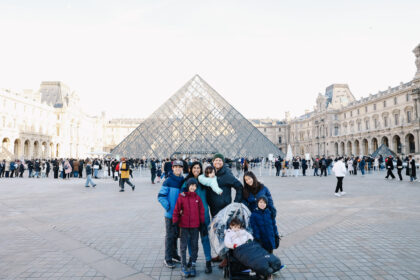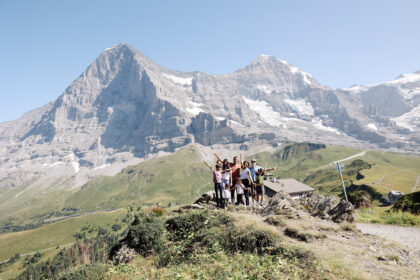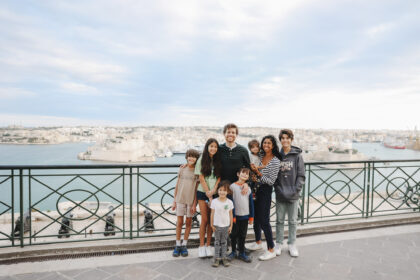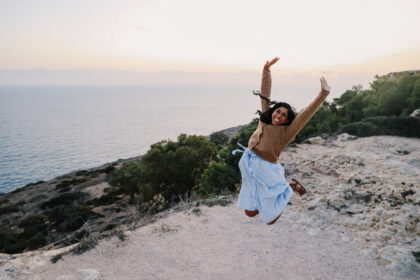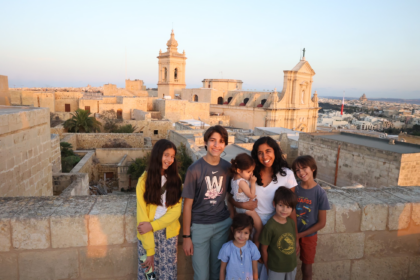We’ve been fortunate enough to visit Zion National Park a number of times, including Zion with kids and in all 4 seasons. It’s always magical! We have had an absolutely wonderful time as a family and loved finding the best things to do in Zion National Park!
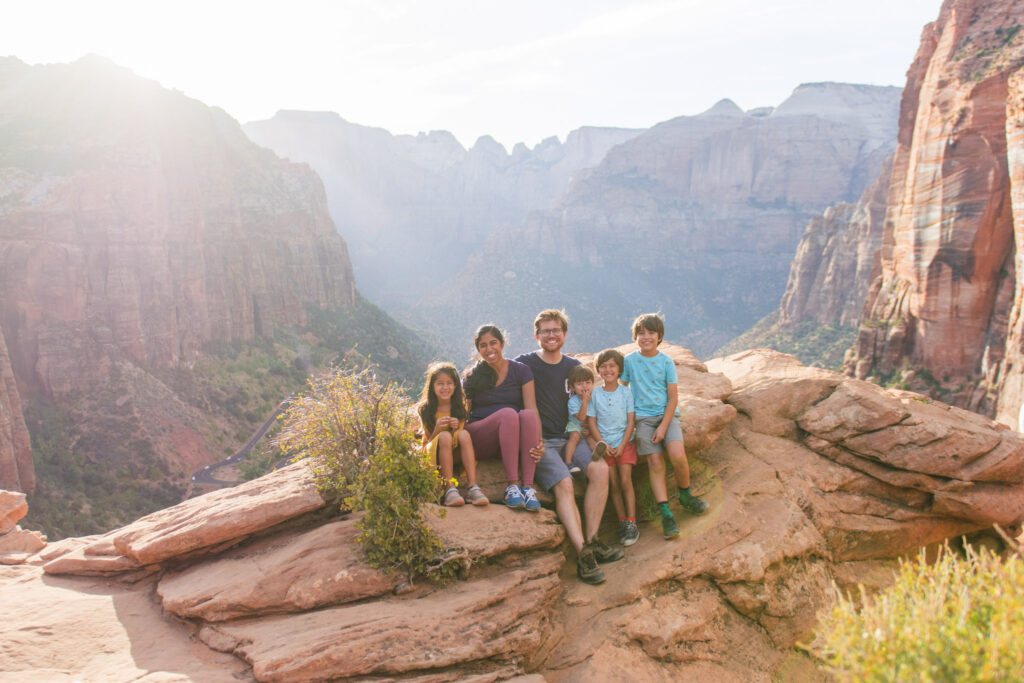
Learn About Zion National Park
Before we visit a national park, our family loves learning about it! It helps us enjoy it more and appreciate the people who have stewarded it well before us. We love learning about the Indigenous history, as well as about wildlife and ecosystems.
Here are a few things to learn about Zion National Park before visiting!
Zion National Park History & Natural Features
- Humans have occupied the land presently known as Zion National Park for over 12,000 years.
- The Southern Paiute called this area Mukuntuweap, which means “straight canyon.”
- The first European American settlers, Mormon pioneers, arrived in the area in the late 1800s. They named the area Zion, which is ancient Hebrew for “sanctuary” or “refuge.”
- Mukuntuweap National Monument was established in 1909. In 1918 Munkutuweap National Monument became Zion National Monument, and in 1919 the named changed again to Zion National Park.
- After its designation as a National Park, Zion welcomed its first group of official visitors, six young women from the University of Utah who spent eight days hiking and climbing within the park.
- The first women park rangers were hired in 1918. At least 20 women rangers were hired between 1918 and 1927 before the NPS decided to stop hiring women under the “park ranger” title to protect the romance of the ranger image. In 1928, the ranger-naturalist title was created to avoid giving women the ranger title. However, men quickly worked to exclude women from the ranger-naturalist positions as well and only a small number of women were hired for these jobs over the next three decades.
- The park has more than 1,000 species of plants ranging from tall, graceful cottonwoods growing along the river to towering pines and firs shading the higher elevations. Prickly pears, cholla, and yucca are among Zion’s desert-adapted plants.
- Zion is critical habitat for the Mexican spotted owl, a threatened species. Another two bird species to watch for in Zion are the peregrine falcon and California condor. Their populations are once again on the rise after many years of losses.
- (Source) (Source) (Source) (Source)
Zion Indigenous History
- The Southern Paiute have called the desert southwest home for at least as far back as 1100 A.D.
- “Paa” ute means water ute, and refers to their preference for living near water sources. These “water utes” lived nomadically and traveled to various areas throughout the year to harvest food and natural materials in the appropriate seasons.
- During spring, the Southern Paiute practiced floodplain gardening, creating reservoirs and irrigation ditches to water corn, squash, melons, gourds, sunflowers, beans and wheat.
- Water was the crucial element to traditional Paiute life-ways and subsistence strategies. In the 1850s, when Mormon settlement of southern Utah began, it was through water-access-denial that the Southern Paiutes began being marginalized.
- It is estimated that when early Spanish explorers first arrived in 1776, there were close to ten thousand Southern Paiutes in areas of Cedar City and Panguitch. But, due to disease, the loss of their farmlands, native plants, and water sources, the Paiute population was reduced by 90 percent after only 25 years of interaction with Mormon settlers.
- Southern Paiutes were also, and still are, skilled basket weavers. They used their handwoven baskets to carry seeds, roots, tubers, berries, and nuts. When sealed with pine pitch, the finely woven baskets carried water.
- In spite of hardship, southern Paiute tribes remain. Today, the tribal bands pursues various economic development projects to ensure sustainability and cultural preservation for future generations. They also continue to celebrate through dancing and games at annual tribal gatherings.
- (Source) (Source)
Featured Zion Picture Book: Sand to Stone: And Back Again

Sand to Stone: And Back Again by Nancy Bo Flood (Author)
Available on Amazon, Bookshop, Target, Thriftbooks
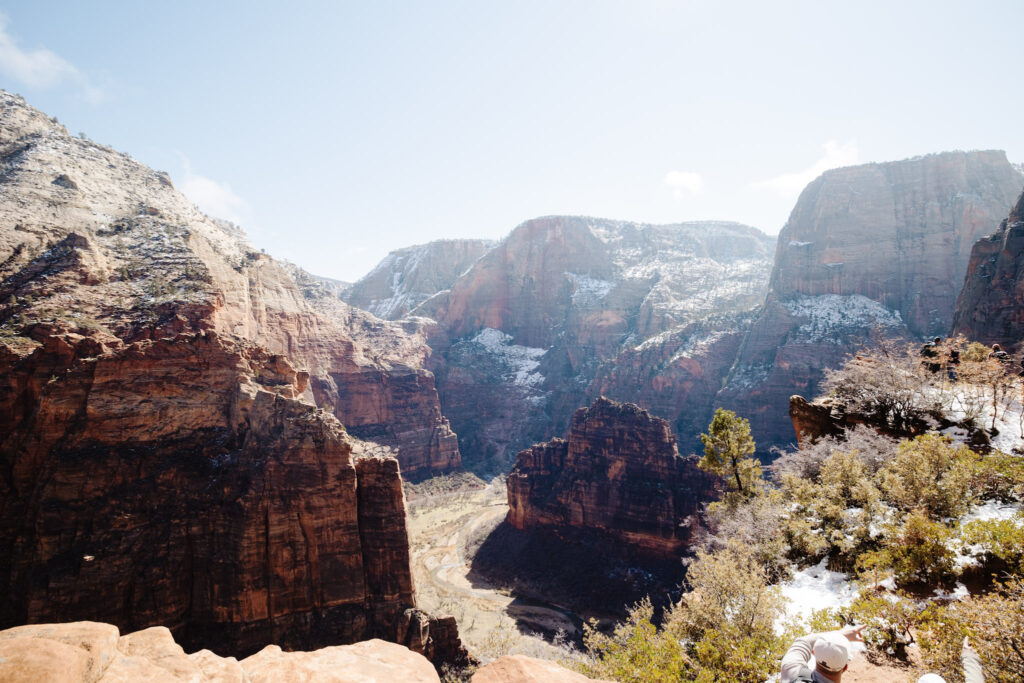
Zion Packing List: What to Pack For a Zion Family Vacation
Zion National Park Packing List
- Carry-all backpack – this is our favorite grown-up pack to carry essentials for a day hike
- Kids’ Hiking Backpack – our kids absolutely love these 18L hiking backpacks. They’re perfect as a day pack or for travel – they hold a ton, are sturdy, comfortable, and have a spot for a water bladder. They even work really well on my short torso and I alternate between one of those or this women’s day pack. We also love this 12L kids day hike backpack for younger kids.
- Backpacking Backpack – if you’ll be doing any overnight adventures, we really love this 40L pack for overnights.
- Layers
- Wool base layers + Socks – great for regulating temperature and moisture wicking. Excellent for cold weather, too. Here are all our favorite wool base layers & socks for the whole family.
- Sun protective gear – long shirts or hooded sun shirts work well.
- Sturdy shoes
- These are our favorite hiking boots for women and men, and these hiking sandals for women and men.
- I’d recommend either sneakers with good tread or hiking shoes when exploring Zion trails with kids. My kids love either hiking sandals, hiking boots, or regular sneakers depending on the type of hike. (I personally prefer my kids to wear kids hiking boots because they’re comfy & waterproof for longer hikes, or the best hiking sandals if we’ll be in water. All our favorites are also available HERE.)
- First aid kit and my favorite bandages (here are all the first aid items we pack when traveling)
- Sunscreen
- I love this kind for kids – it’s mineral-based, provides great protection, great for sensitive skin, and rubs in easily. This is my favorite facial sunscreen for myself (use code LPF15 for 15% off).
- Insect Repellent
- It can definitely get buggy around here, especially in the summer. We love this deet-free repellent (use code LPF15) and this Picardin-based bug repellent in areas that don’t have a high prevalence of disease-carrying mosquitos (we use Deet in Zika/dengue/malarial areas).
- Quick-Dry Towel
- We like to have one of these quick-dry towels on hand in case of rain or any spills. I also really love these ribbed quick dry towels!
- Hat
- This is my favorite hiking hat and my favorite hat for babies.
- Camera equipment
- Water/snacks
- We love this water bottle and this water bottle for adults.
- This hydration backpack for kids is a favorite. (Also available here.)
- My older kids LOVE this water bottle.
- This and this are our favorite water bottles for toddlers.
- Child hiking carrier – Zion National Park has a number of wonderful hikes, and we love having a carrier to pack along a baby or toddler when visiting Zion with kids. This is our favorite backpack hiking carrier for visiting Zion National Park with toddler that also has plenty of room for snacks and even our big camera. We also love this soft structured carrier for younger babies, and this one is excellent for travel, especially if you won’t be using it all the time (it packs up small) or will be getting wet (it dries in a flash).
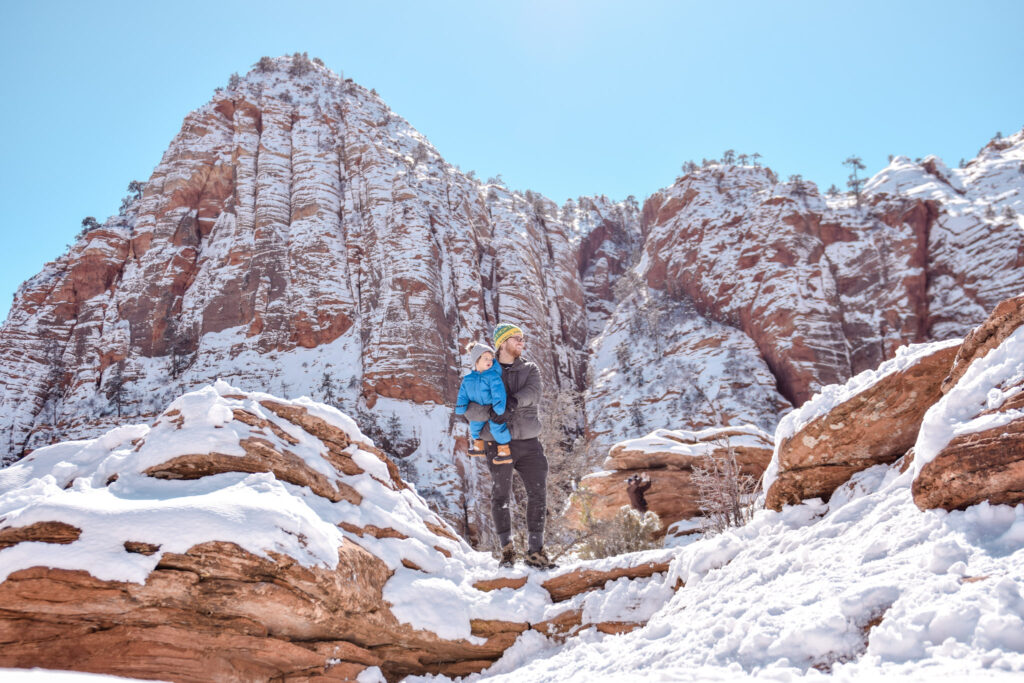
How To Get to Zion National Park
The closest international airport to Zion National Park is in Las Vegas, Nevada, about 170 miles from the park. Sea-Tac International, near Seattle, WA. From Las Vegas, you’ll want a car to get to Zion National Park. You can also fly into Salt Lake City, Utah and drive from there or take a connecting regional flight.
Here is more information about flying into Salt Lake City:
- Salt Lake City, Utah – 300 miles from Zion.
- Saint George, Utah – 49 miles from Zion and has flights from Salt Lake City, Utah and Denver, Colorado.
- Cedar City, Utah – 60 miles from Zion and has flights from Salt Lake City, Utah.
How Many Days Should I Spend at Zion National Park?
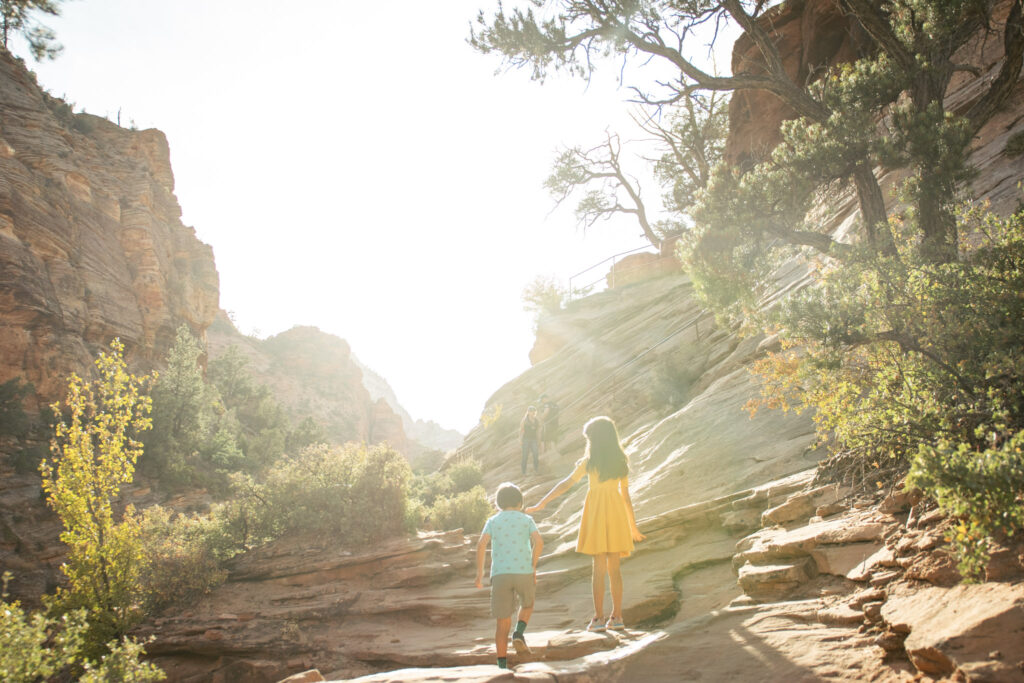
Where to Stay Near Zion National Park: Zion Lodging for Families
Camping in Zion National Park
Zion National Park has three campgrounds.
- Watchman Campground is open year-round. Make reservations up to six months ahead of your visit. Reservations only.
- South Campground is open spring through fall. Reservations only.
- Lava Point Campground is about a 1-hour drive from Zion Canyon on the Kolob Terrace Road. Camping spring through fall. Reservations only.
Several area campgrounds are a short drive from the park. Check the following links for more information.
Zion Canyon Visitors Bureau
East Zion Tourism Council
St. George Area Visitor Bureau
BLM, St. George Field Office
Kane County, Utah (including Kanab)
Zion Lodging with Kids
Accommodations Inside the Park
Accommodations Outside the Park
Sprindale Places to Stay:
- SpringHill Suites by Marriott Springdale Zion National Park (we stayed at this one a couple years ago and loved the views & breakfast)
- Hampton Inn & Suites Springdale/Zion National Park
- Harvest House Bed and Breakfast
- Holiday Inn Express Springdale – Zion National Park Area
Here are a few other recommended spots outside of Springdale:
- Zion Cliff Lodge
- 3BR Cabin at LVBar Ranch
- Comfort Suites Kanab
- Travelodge by Wyndham Kanab
- La Quinta Cedar City
- 2BR House in LaVerkin
- Cedar Breaks Lodge
Additionally, Zion Ponderosa Ranch Resort is an absolutely amazing place to stay outside Zion National Park. We loved our time here doing all kinds of adventurous activities, like horse riding, climbing, and organized canyoneering and Jeep tours. Plus, they have tons of facilities for younger kids to run and play and have fun. I highly recommend staying here if you have more than a couple days to spend in the Zion area – I’d plan for at least one full day on the property to enjoy all the amenities.

Where to Eat near Zion National Park
Where to Eat in Zion National Park
Red Rock Grill Dining Room at Zion Lodge
Open year round. Dinner reservations are advised spring through fall: 435-772-7760.
Castle Dome Cafe at Zion Lodge
Open seasonally.
Where to Eat near Zion National Park
- Deep Creek Coffee Co: casual breakfast and lunch to-go.
- Meme’s Cafe: homestyle cafe for breakfast, lunch and dinner
- Anthera: bistro-syle restaurant for breakfast, lunch and dinner.
- Oscar’s Cafe: classic breakfast and Mexican, burgers and sandwiches for lunch and dinner.
- Whiptail Grill: Mexican lunch and dinner.
- Thai Sapa: pan-Asian lunch and dinner.
- Zion Pizza & Noodle Co: pizza, pasta and salads for dinner.
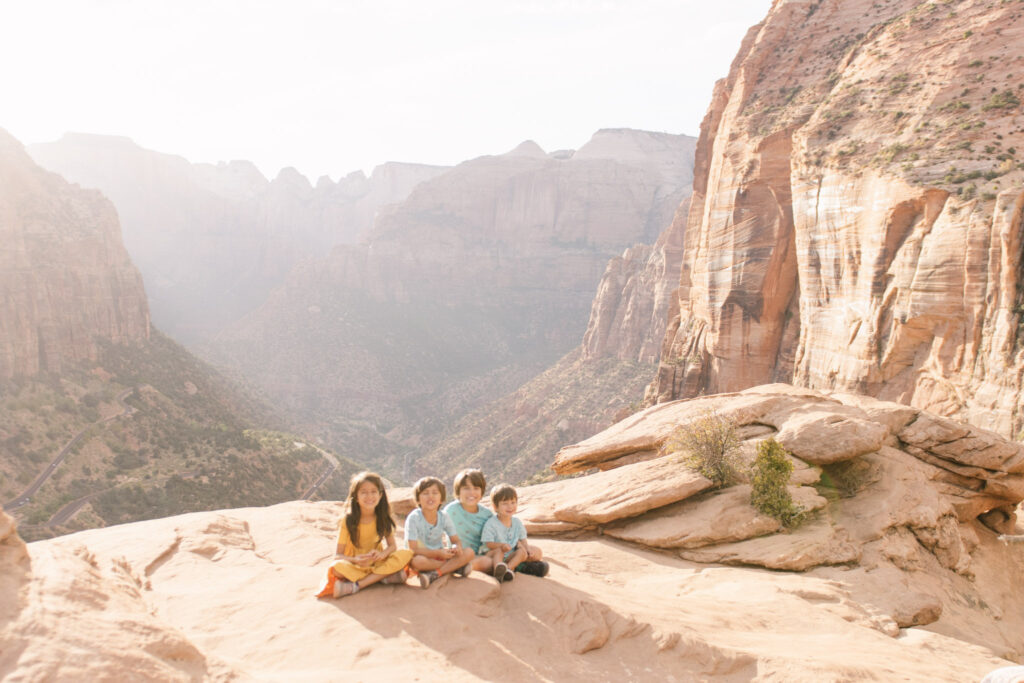
How to Get Around Zion National Park: Zion Transportation
You will most definitely need a vehicle to get to Zion National Park, but once there you may be able to exclusively use the park shuttle system. From March to December, the park has two free shuttle lines. If you want to explore some of the most popular sites during the shuttle season, you will have to use the shuttle as Zion Canyon Scenic drive closes to all other vehicles.
Here is what you need to know to plan your visit:
- You do not need a ticket or reservation to ride the park shuttle or enter the park.
- During the shuttle season visitors cannot drive personal vehicles on Zion Canyon Scenic Drive.
- Shuttles arrive about every 15 minutes on the Springdale Line (outside the park) and about every 5-10 minutes on the Zion Canyon Line (inside the park).
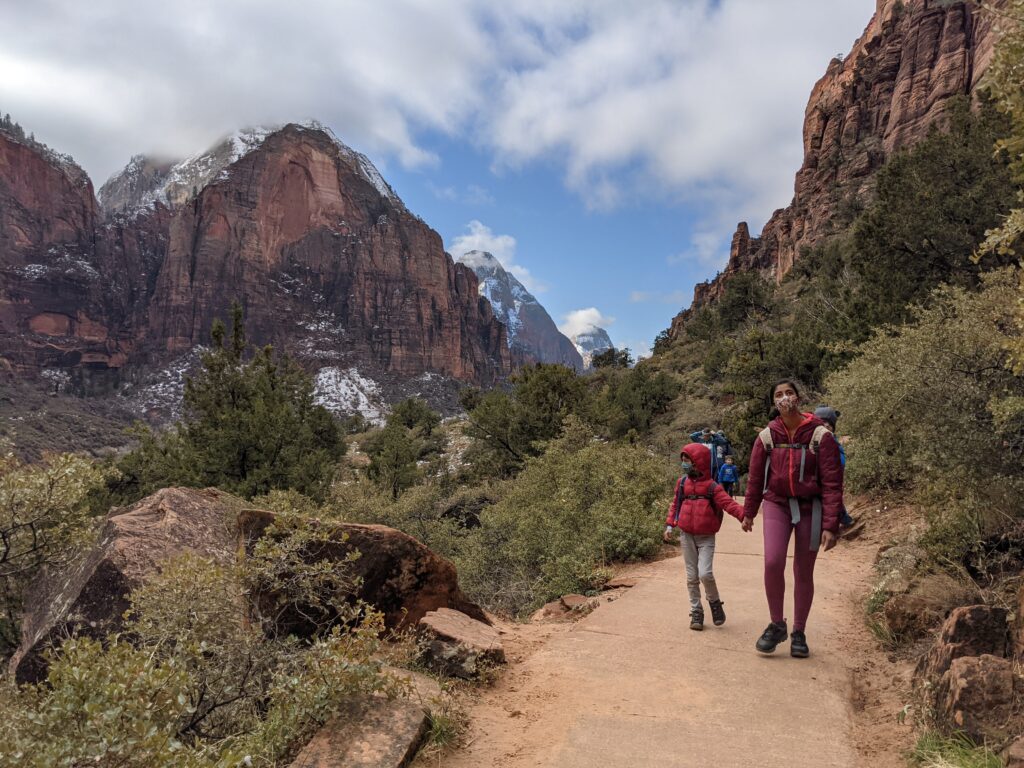
And here is a complete post about traveling with car seats. Here are our favorites by age:
- Favorite Infant Car Seat For Travel Available at: Amazon, Target, Walmart
- Favorite Convertible Car Seat For Travel Available at: Walmart
- Favorite Booster Restrain Vest For Travel Available at: RideSafer
- Favorite Booster Seat For Travel Available at: Amazon
Best Time to Go to Zion: Zion National Park Weather
Zion is beautiful in all seasons! Every seasons has its advantages and the best season for you will depend on the kinds of activities you’re hoping to do. For example, if you’re hoping to hike the Narrows, you’ll want to avoid spring – and potentially even winter and summer. More about the park’s weather conditions can be found here.
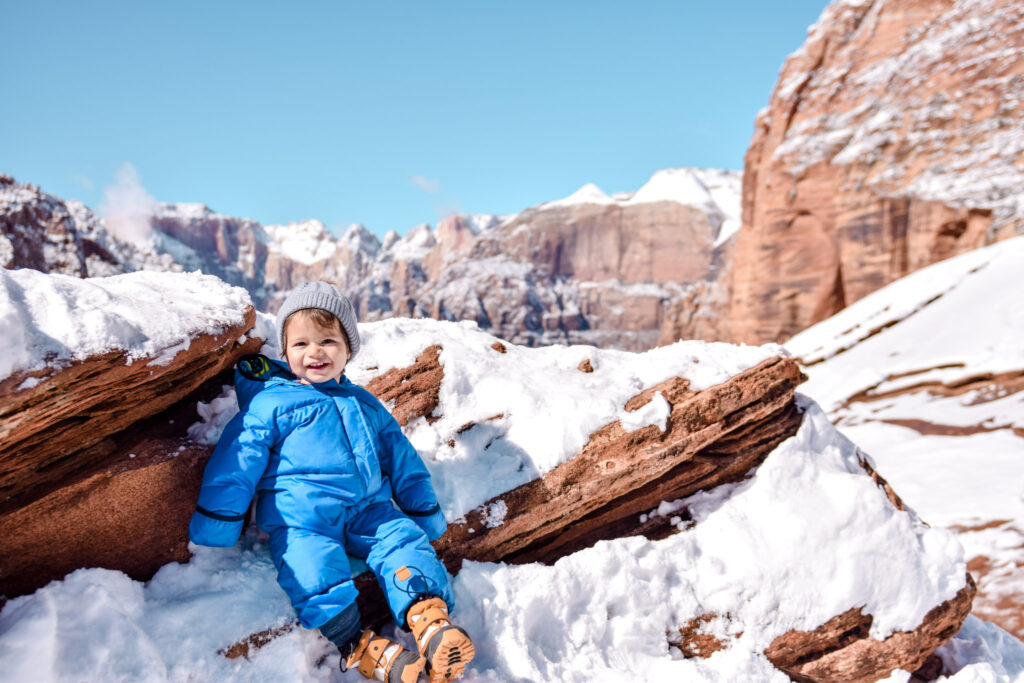
Top Zion Checklist of the Best Things to Do in Zion National Park
- Hike Canyon Overlook Trail for epic canyon views!
- Take the shuttle to visit Court of the Patriarchs
- Enjoy the scenic drive on Zion-Mount Carmel Highway and keep an eye out for wildlife. Stop at Checkerboard Mesa and look for Bighorn Sheep.
- Walk or bike part or all of the flat, paved Pa’rus Trail
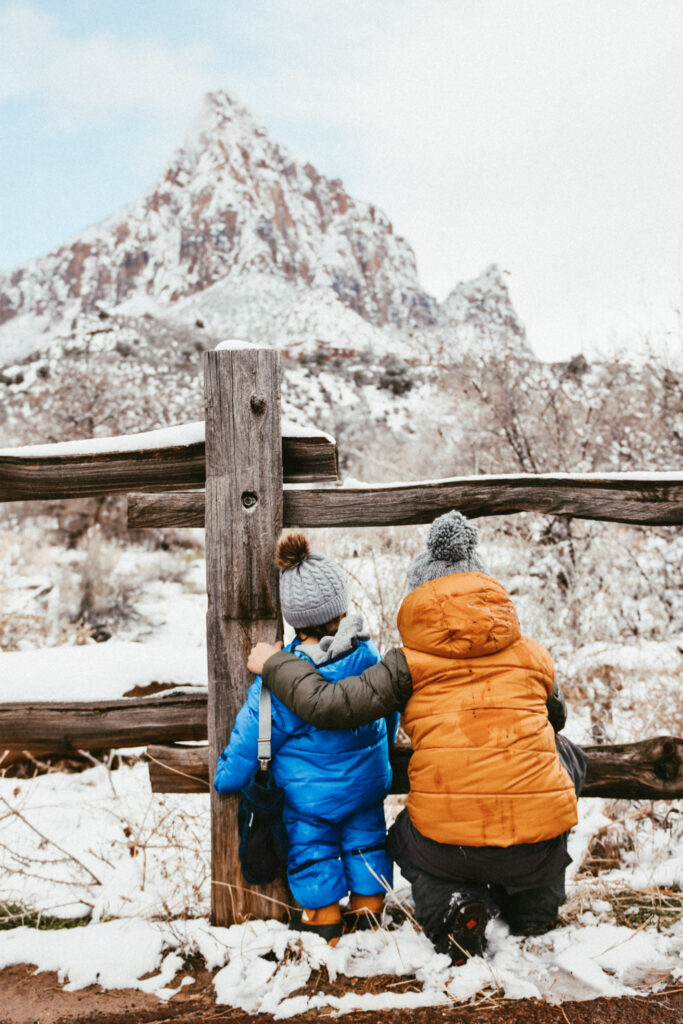
Best Things to Do in Zion National Park: Zion National Park Itinerary & Unique Things To Do in Zion National Park
1. Hiking at Zion National Park: Best Hikes for Families at Zion National Park
- Canyon Overlook (0.9 miles RT, 390 ft elevation gain)
- Emerald Pools (1.2 miles to lower, 2.0 miles to middle, 3.0 miles to upper; 620 ft elevation gain, 69 ft to Lower Emerald Pools)
- Pa’rus Trail (the whole thing is 3.5 miles but it’s easy to walk just part of this flat, paved trail for epic Zion views)
- Scout Lookout Trail (3.9 miles, 1,115 ft elevation gain) with the possible addition of Angel’s Landing (5 miles, 1827ft elevation gain)
- The Narrows (bottom to top: 9 miles, 696ft elevation gain) – see more info in #7
NOTES ON HIKING ANGEL’S LANDING:
Scout’s Landing (the lookout on the trail on the way to Angel’s Landing) is moderately strenuous but appropriate for families who would like a challenge. Angel’s Landing is very challenging with extreme drop offs – it’s surely the most dangerous hike I’ve done and certainly one of if not the most dangerous hike in Zion National Park. . While some families do it with young children, including with babies/toddlers in a carrier, I do NOT recommend this. The footing is uncertain and wearing a child can easily throw off your balance in an already risky situation. I suggest that only those with children ages 10+ who are experienced hikers should attempt it, and even then, please know your child and their level of risk tolerance/fear of heights.
If your family would like to experience this hike, check out my post on Hiking Angels Landing with Kids. This post also details our experience hiking Scouts Looks with kids ages 1-10 years old.
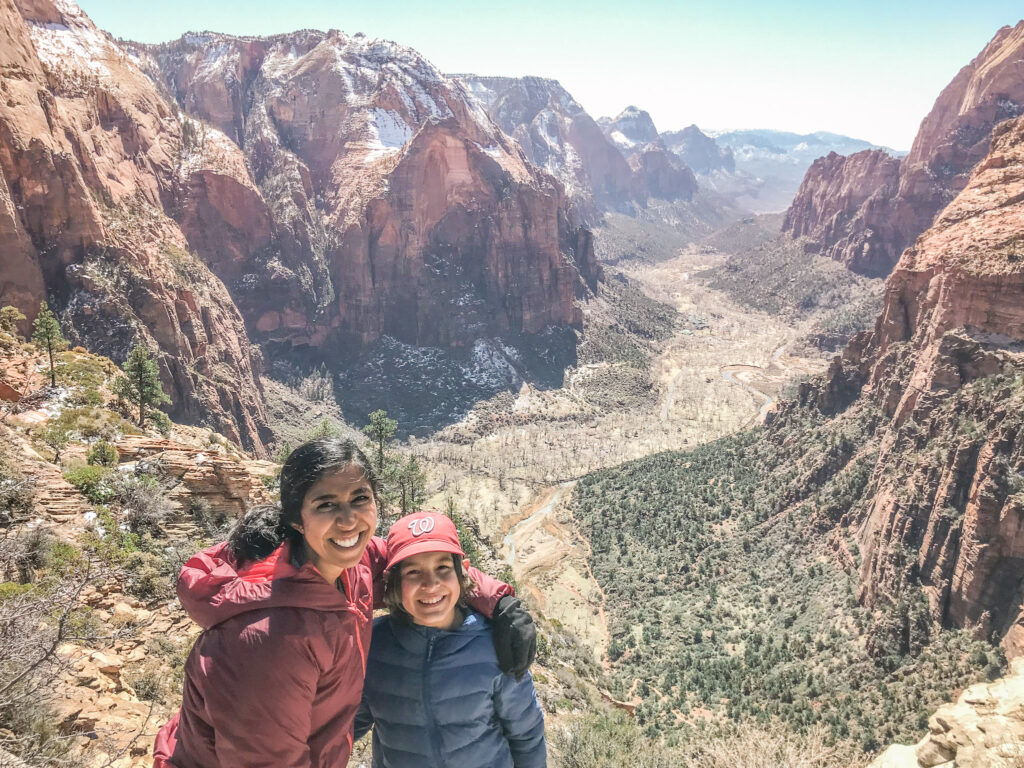
2. Take in Zion Canyon
Whether you ride the shuttle, drive (in winter), bike, or walk, be sure to leave some time to take in the gorgeous views of Zion Canyon.
3. Junior Ranger Program
Zion offers a guided and self-guided Junior Ranger experiences for ages four and older. Self-guided activity booklets are available for free at park visitor centers, the Zion Human History Museum, and the Nature Center. You can also download the booklet ahead of time. Children can complete pages in the booklet and attend a ranger-led program to earn their Junior Ranger badge for Zion National Park.
You can also complete activities and become a Virtual Junior Ranger from your home. Become a Virtual Junior Ranger at Zion!
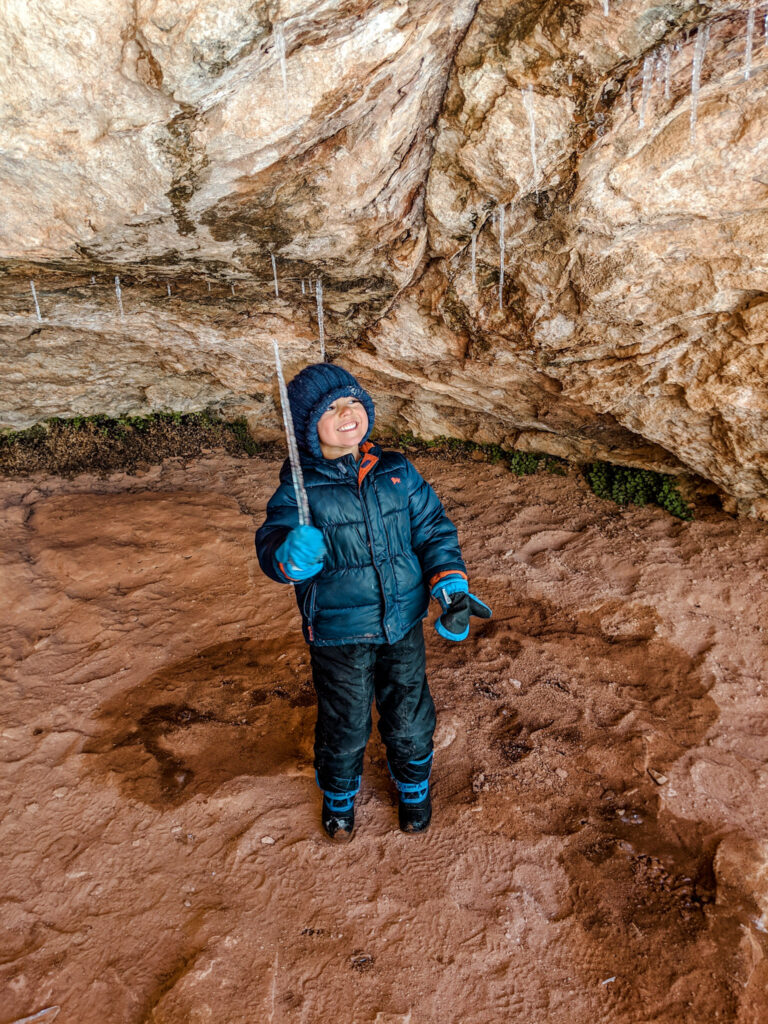
4. Visit the Zion Human History Museum
The Zion Human History Museum displays artifacts and archival materials from the permanent collections of Zion National Park. These exhibits showcase the human history of Zion and illustrate the effects water has had upon both the peoples and the place. Water has created the scenery and sanctuary which have driven people to travel through and settle in Zion Canyon for thousands of years. Exhibits include topics such as geology, plants, animals, survival, and community. Museum hours change seasonally, so check this page before your visit.
5. Explore Kolob Canyons
Kolob Canyons is located in a different area of the park than some of the best known areas like the Narrows and Angels Landing. But it’s well worth getting off the beaten path to see this beautiful spot! A five-mile scenic drive along the Kolob Canyons Road allows visitors to view the crimson canyons and gain access to various trails and scenic viewpoints. In this corner of the park, narrow parallel box canyons are cut into the western edge of the Colorado Plateau, forming majestic peaks and 2,000 foot cliff walls. View the panoramic landscape from the scenic drive, hike into one of the majestic canyons, or adventure into the Zion Wilderness – the Kolob Canyons of Zion has something special for everyone to experience!
6. Take A Zion ATV Tour
We took a Jeep tour around the top of Zion on one of our visits and it was absolutely magical. We loved taking a sunset ATV tour, but there are so many different ones – some that include canyoneering, some that go in slot canyons, one along the east rim viewing Checkerboard Mesa, and so many more. It’s such a fun and unique Zion National Park activity for families! Since we stayed at Zion Ponderosa on one of our trips, we were able to easily schedule this tour directly from there, which was incredible.
7. Go Bicycling in Zion National Park
Riding your bike can be a great way to experience Zion National Park! Bicycling is permitted on all park roadways and on the Pa’rus Trail. Though personal vehicles are not, bikes are allowed on Zion Canyon Scenic Drive. Certainly a memorable experience! Be sure to don your helmets and check this page for more rules and guidelines for bicycling in Zion, including a cycling route map. The Pa’rus Trail is also a great area to bike or scooter – it’s flat and paved and provides terrific views.
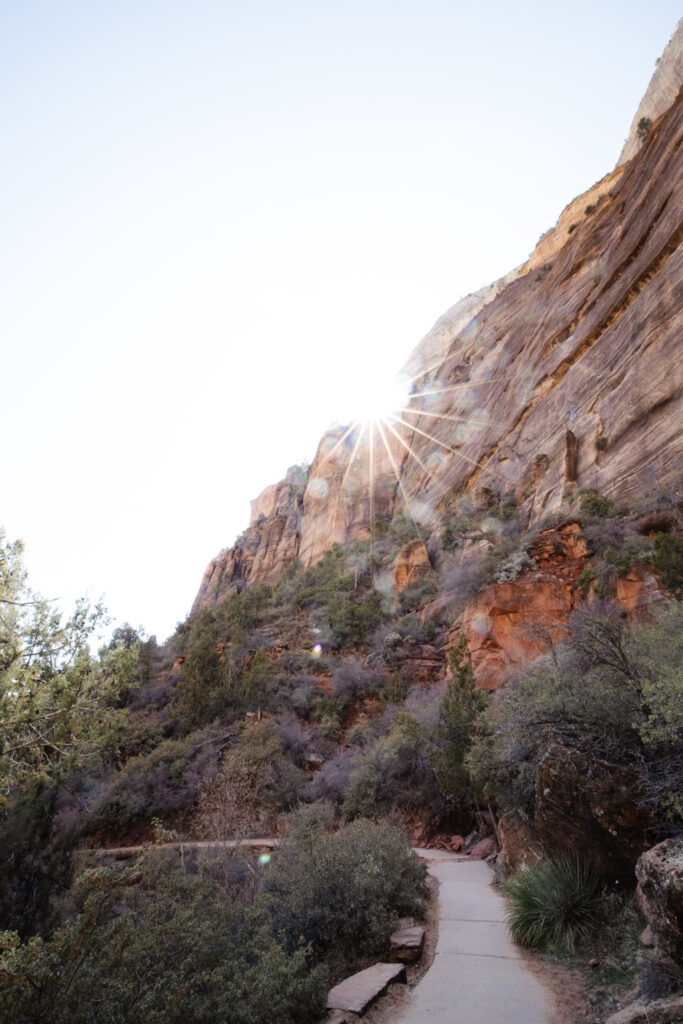
8. Hiking The Narrows With Kids
The Narrows is the narrowest section of Zion Canyon. This gorge, with walls a thousand feet tall and the river sometimes just twenty to thirty feet wide, is one of the most popular areas in Zion National Park. You can see The Narrows by hiking along the paved, wheelchair accessible Riverside Walk for one mile from the Temple of Sinawava. Riverside Walk is what I recommend for families with young children. Keep in mind that hiking the Narrows can be challenging for families with young children as you’ll be walking through (very cold!) water – make sure you’re prepared with all the proper gear to say safe and happy. (This private guided hike of the Narrows provides all the equipment you need along with a guide to explain the history & ecology along the way.)
A hike through The Narrows requires hiking in the Virgin River. You must get your feet wet since there is no trail. The water level varies from a few inches to a few feet depending on the section and season. Most people choose to start their hike from the Temple of Sinawava via the Riverside Walk and then walk upstream before turning around and hiking back down to the Temple of Sinawava. If you plan to do the complete 16-mile hike or to backpack through the gorge, you will need a permit.
Close-toed shoes and a hiking stick are recommended for hiking on the slick, uneven rocks in The Narrows. High canyon walls and water create cooler conditions than anywhere else in Zion Canyon, so wear and bring seasonally appropriate synthetic layers. (I personally use and love these poles. I recommend wearing water hiking sandals – I use these while Dan loves these, and most of our kids have loved these for years.)
The Narrows is regularly closed when water levels are too high (spring) or at the threat of flash floods (summer). It also closes for other risks, including toxic cyanobacteria. It’s important to plan ahead, be prepared for changing conditions, and be as flexible as possible when adding The Narrows to your itinerary. If you are sure you want to hike The Narrows, visit in fall and build some flexibility into your schedule.
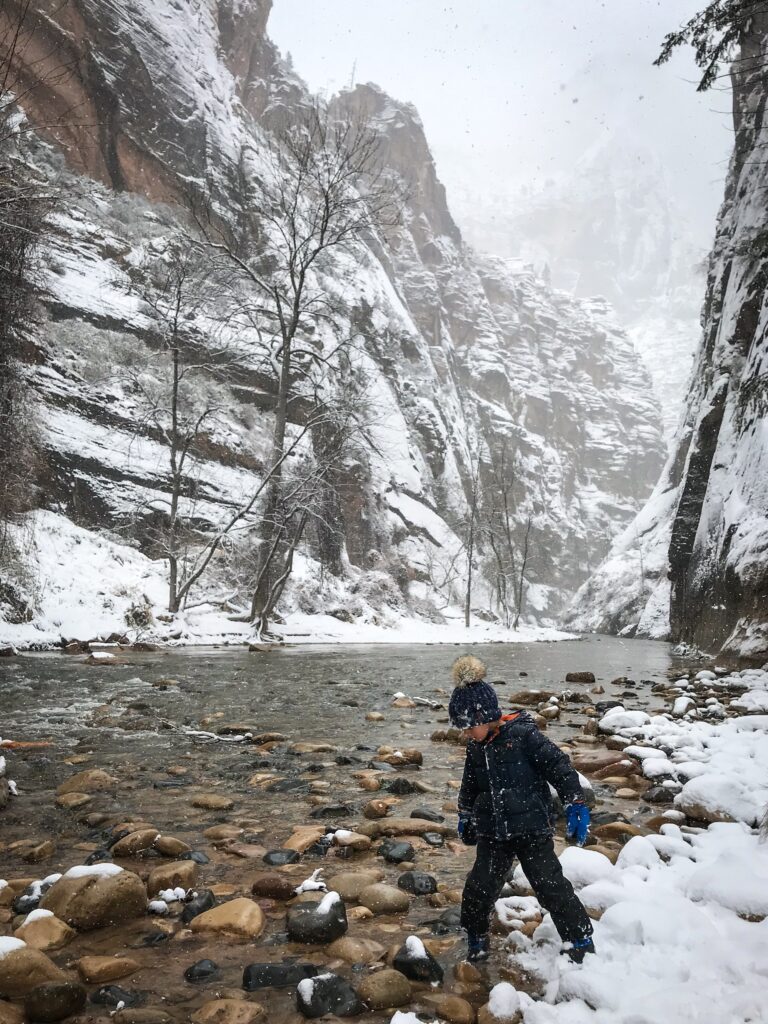
9. Canyoneering in Zion National Park
Canyoneering is an outdoor activity that combines route finding, rappelling, problem solving, swimming, and hiking. Zion National Park has become one of the premier places in the country to participate in this exciting activity.
A Wilderness Permit is required for all technical canyoneering trips. With dozens of different canyons to explore, some barely wide enough for a human to squeeze through, the park offers opportunities that range from trips for beginners to experiences requiring advanced technical skills.
For canyoneering permits and reservations, safety regulations and details about where to go, see the park’s Canyoneering Page. This guided canyoneering tour is an excellent way to experience a beautiful, adventuresome activity in Zion with experienced guides who provide all the instruction and equipment. There are 4-hour and 2-hour versions of this tour. Again, we loved staying at Zion Ponderosa and being able to book these types of amazing activities directly through them.
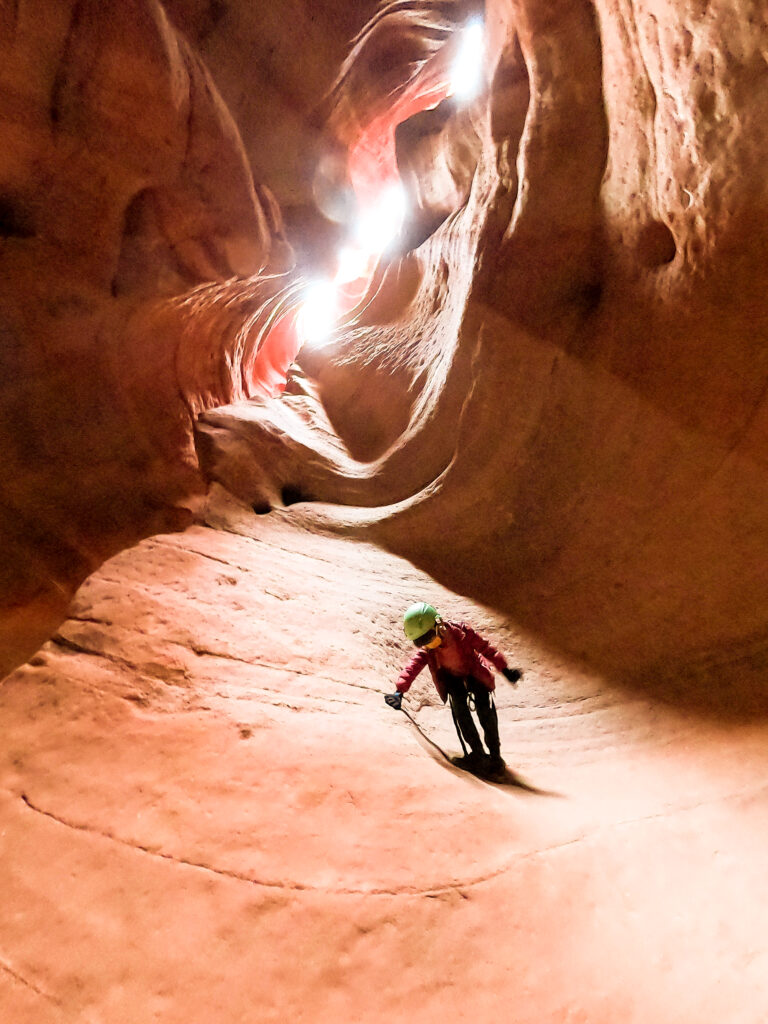
10. Take a Scenic Drive
While you aren’t able to drive through Zion Canyon in most seasons (you can in winter!), driving through the east side of Zion National Park or in the Kolob Canyon area is absolutely wonderful – and often much quieter than Zion Canyon. Take a leisurely drive through some of the most scenic and untouched parts of the park and keep your eyes open for wildlife and even ancient petroglyphs. This self-guided driving tour will give you lots of terrific info if you want something more structured, or this self-guided audio tour that combines Zion & Bryce Canyon is another great option. (If you’re planning to explore other national parks, this bundle includes 20+ parks.)
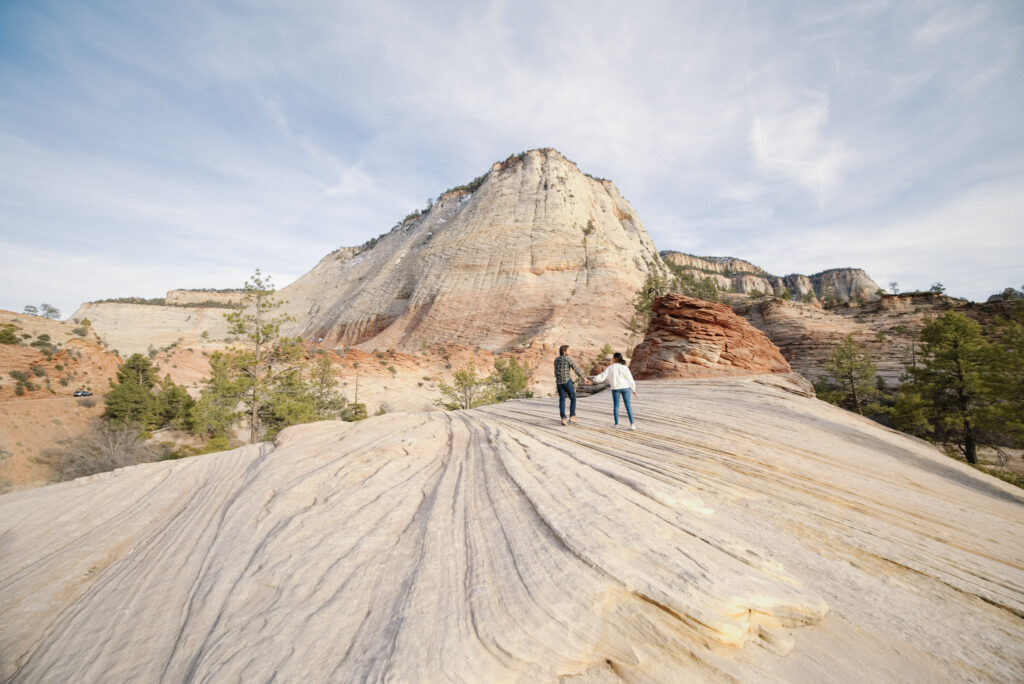
11. Join a Ranger Program
If you have time, be sure to attend a free ranger program during your visit to Zion National Park. These talks highlight information about the landscapes, plants, animals, and history that make Zion special. There are year-round, daily Patio Talks at the Zion Canyon Visitor Center. May through October, there are daily evening programs at the Watchman Campground. Topics often include the ranger’s favorite stories (animals, people, geology).
You can check by downloading the NPS App or print a copy of the Ranger-led Evening Program Calendar here.
12. Stargazing at Zion National Park
Zion is a great place to connect with the night sky, whether you are an avid astrophotographer or getting your first view of the Milky Way. As an International Dark Sky Park, thousands of stars are visible after sunset, presenting an incredible opportunity to see the skies like very few other places in the country. Be sure to pack layers as nighttime temperatures can be drastically cooler than those in the daytime.
Zion has dark night skies throughout the park. To help with planning, here are some easily accessible night sky viewing areas:
- Zion Canyon: Pa’rus Trail and Human History Museum patio (ADA accessible)
- East Side: Checkerboard Mesa Pull-off
- Kolob Terrace Road: Lava Point Overlook (closes seasonally, so check current conditions before you go), Wildcat Canyon Trailhead, and Left Fork Trailhead
- Kolob Canyons: Timber Creek Parking Lot
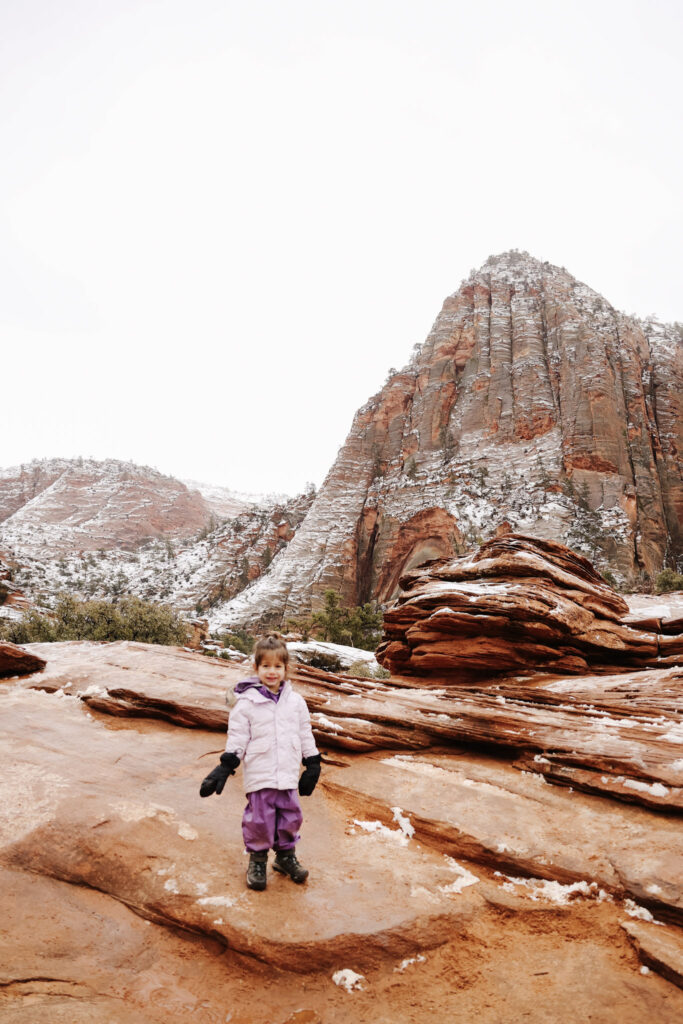
13. See the Wildlife at Zion National Park
There are many wild animals that call Zion National Park home. And although there are plenty, the wildlife can sometimes be hard to spot. Here are some tips for wildlife viewing at Zion National Park:
- Watch at dawn and dusk: Most wildlife activity occurs around dawn and dusk, when animals feed. Plan excursions during these parts of the day to increase your chances of seeing wildlife.
- Bring the right tools: Field guides, binoculars, a zoom lens, and comfy shoes can improve you wildlife viewing experience.
- Know their habits and habitats: Habitat preferences and seasonal cycles can determine where and when you’re most likely to observe an animal. Learning about wildlife habits and habitats before you visit will increase your chances of an encounter.
- Ask a ranger: Stop by the nearest Visitor Center for current information on the best wildlife viewing areas.
14. Photography in Zion National Park
- Hike Zion Canyon to get incredible views of the canyon. Stay for sunset!
- Explore the quieter East side of the park beyond Zion Canyon for more rugged views and increased chances of seeing wildlife.
- Take the shuttle tour of Zion Canyon Scenic Drive for sweeping views of the park’s most iconic landscapes.
Photo Equipment
- Camera
- 70-200mm lens (for wildlife)
- 24-70mm lens
- 15-35mm lens (for astrophotography)
- Tripod
- ND Filter
- Remote
Enjoy Your Visit to Zion National Park with Kids!
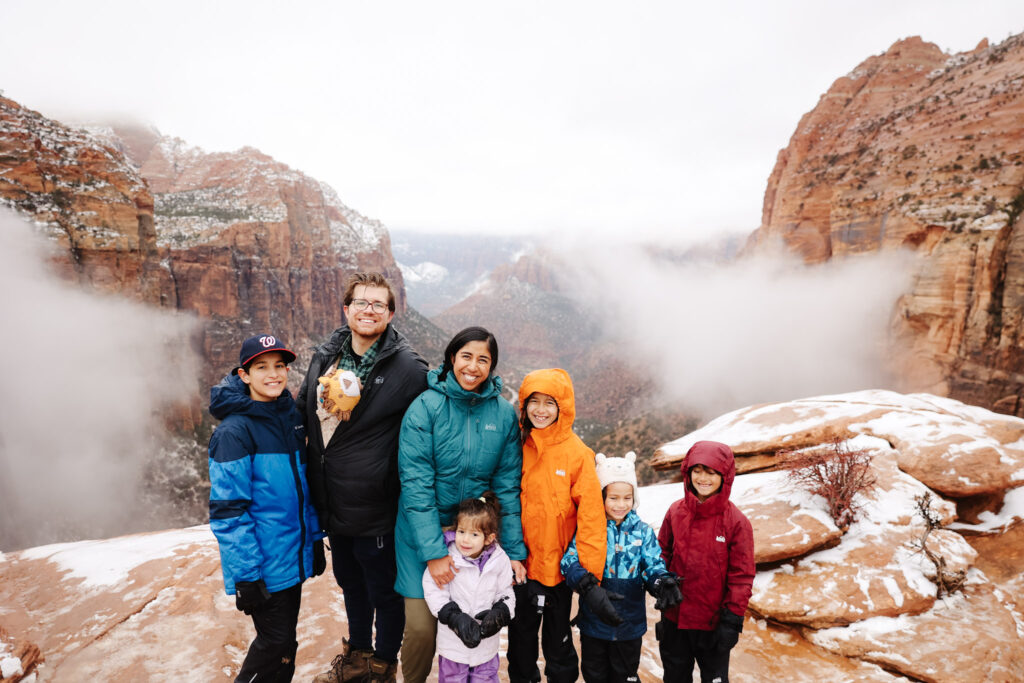
MORE POSTS
IF YOU LIKED THIS POST ABOUT THE BEST THINGS TO DO IN ZION NATIONAL PARK, YOU MIGHT LIKE THESE POSTS TOO:
- Amazing Things to Do in Kanab Utah With Kids
- 13 Couples Trips We’ve Loved
- Southern Utah National Parks with Kids: One Week Winter Road Trip
- Passport To The Parks: FREE National Park Printable Coloring Book for Families
